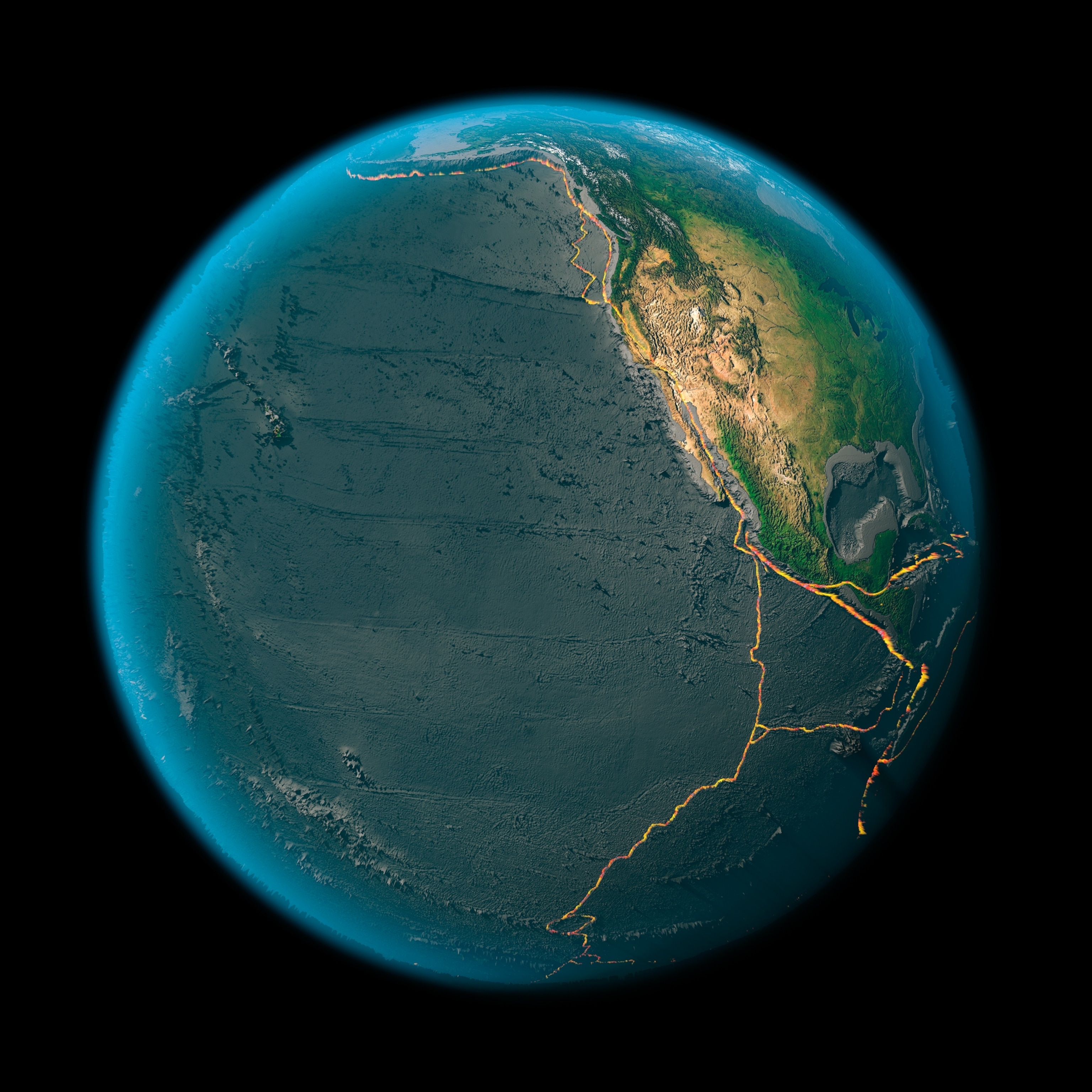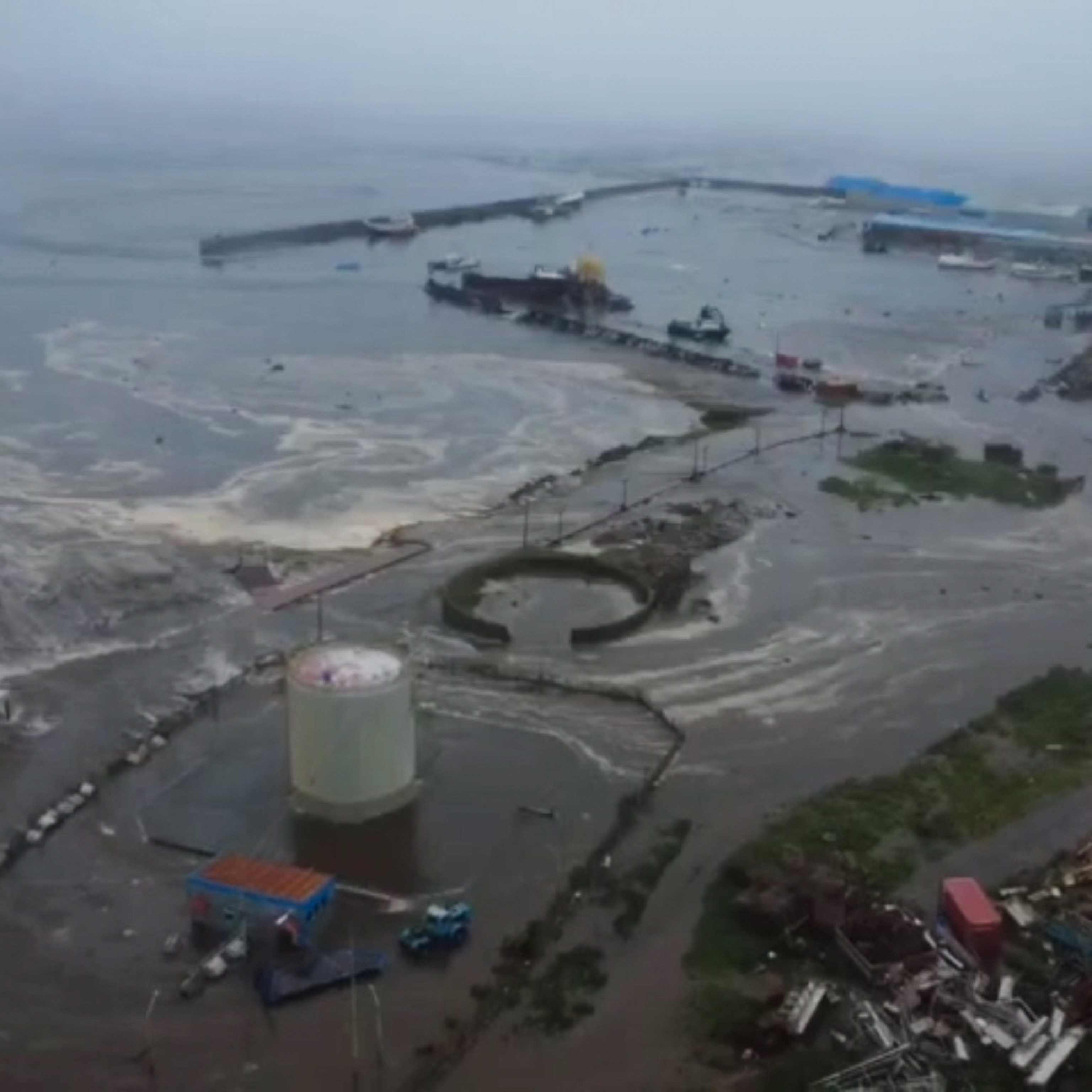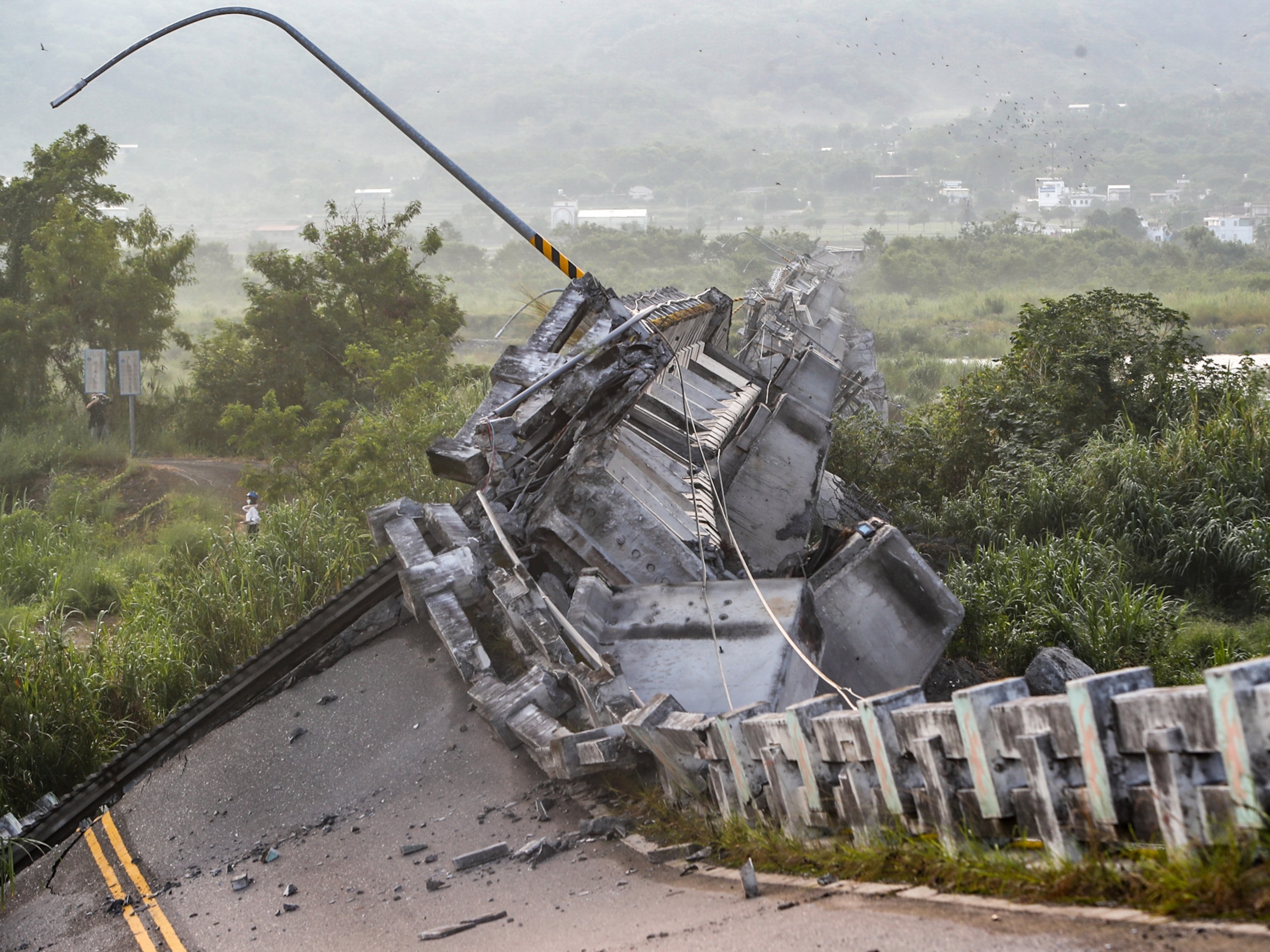
How ‘the big one’ near Seattle could trigger an earthquake in San Francisco
Are two of the deadliest earthquake zones in North America linked? It's possible—but controversial.
One of the most dangerous faults in the United States, the Cascadia Subduction Zone, may be able to trigger an earthquake on the San Andreas Fault, a new study says. But some scientists want more evidence.
According to the paper, published in September in the journal Geosphere, deep-sea sediment cores taken along the West Coast offer evidence that the two fault systems have been synced up for much of the last 2,500 years. Based on the apparent timing of the sediment deposits, the paper argues, an earthquake in Cascadia can trigger an earthquake in the San Andreas Fault system.
Chris Goldfinger, an emeritus geologist at Oregon State University who led the work and has been studying this idea since the 1990s, thinks it’s a big step forward. Some other scientists are intrigued, but unconvinced.
“The hypothesis is worthwhile,” says Diego Melgar, a geophysicist at the University of Oregon who leads a major research hub for Cascadia quakes. “It’s definitely an important question to ask and answer. What they’ve found is tantalizing, but I don’t think they’ve quite answered it.”
What is the Cascadia Subduction Zone?
The western coast of North America is a breeding ground for earthquakes, big and small. The San Andreas may be the most famous of its faults, slicing through densely populated parts of California. But to the north, another risk lurks offshore.
The Cascadia Subduction Zone, where one tectonic plate grates under another, stretches about 1,000 miles from Vancouver Island to northern California. Models estimate it can produce at least a magnitude 9 earthquake, the same as deadly earthquakes in Sumatra in 2004 and Japan in 2011. (In comparison, the San Andreas has maxed out at magnitude 7.9 in instrumented history.) Cascadia’s biggest quake in recent geologic history struck in 1700, and experts estimate it could have exceeded magnitude 9.
(Here's what might happen if the next big one hits Seattle.)
Scientists know Cascadia’s risk now, but as recently as the 1980s researchers thought the subduction zone was essentially inactive. “Native peoples have oral histories of earthquakes here, of tsunamis and strong shaking,” says Melgar. “Western society forgot there were earthquakes here.”
Today, the region is a hotspot of seismology, and its possible link with the nearby San Andreas is an open question.
Seafloor sediments may reveal triggering
The idea that the Cascadia and San Andreas earthquake zones might be connected has roots in the 1990s, when a researcher proposed that layers of seafloor sediment deposits called turbidites recorded a series of West Coast earthquakes.
Turbidites are left behind by submarine landslides, which can happen randomly but are often caused by earthquakes and storms. The underwater landslide sends mud and sand flowing like a river, tens to hundreds of kilometers along the seafloor. Over time, these deposits and others build up. Seafloor core samples can reveal this history of turbidites.
Goldfinger didn’t initially buy it, and in the late 1990s, he began working to disprove the idea. “I was pretty skeptical about the whole story,” he recalls. But as his team collected more cores and found more turbidites, he quickly grew convinced that quakes were actually the best explanation.
He kept collecting cores and focused research on turbidites that kept appearing in pairs off the shores of Oregon and northern California. His new paper presents more cores, 3-D scans of the turbidites, additional age constraints aside from radiocarbon dating, and analyses of seafloor structure. Hundreds of cores cover more than 2,500 years of sediment deposition off the West Coast.
Goldfinger interprets the turbidite pairs as two quakes in quick succession, stacking one turbidite atop another in the cores. A more distant quake would leave a thinner deposit; a closer quake, a thicker deposit.
And based on his new analyses, he thinks some pairs in Oregon, sent by Cascadia, match up with pairs near northern California, where the San Andreas has its influence. Turbidite pairs hundreds of miles apart from each other seemed to occur at roughly the same time.
To him, stacked turbidites that line up with more distant ones has one strong explanation: A quake in Cascadia that triggers a quake in the San Andreas. He suspects that some quakes were likely minutes to hours apart; others could have been separated by months, years, or even decades.
“Alternative explanations just melt away, and you’re left with this,” he says. “I’m very confident in this. Not in every detail, but in the big picture.”
How strong is this claim?
According to geophysics, it’s technically possible for one earthquake fault to trigger another. A series of earthquakes in New Zealand in 2016 that jumped from continental crust to a subduction zone might be the closest example of this happening, says Melgar. But he and all the other outside experts contacted for this story agreed that more research is needed before any triggering relationship between Cascadia and the San Andreas Fault is certain.
First, the turbidites could have a different source. The cores taken farthest from the shore are the strongest contenders for quake-generated turbidites, but the others could have been generated by storms or other processes, says Zoltán Sylvester, a sedimentologist at the University of Texas at Austin.
Then there’s the challenge of correlating cores hundreds of miles apart.
“These deposits all kind of look the same, even to me,” says Sylvester, who worked on sediment cores in the oil and gas industry for decades. “It’s easy to trick yourself into thinking that one little detail here must be the same as a little detail over there.”
Melgar agrees with Goldfinger’s interpretation that most turbidites in Cascadia could be from earthquakes, but he wasn’t convinced that far-flung pairs were connected and formed from related earthquakes. That concern stems in part from challenges in dating the turbidites. The paper adds new approaches to improve the deposits’ ages relative to each other, but they could be hundreds of years apart—far from quakes in relatively quick succession.
“What they’re presenting as synchronicity is in no way a slam dunk,” Melgar says. “Can you really say these happened at the same time? Most of us would say no.”
The triggering idea is too far a reach at this point, he concludes, although there’s a good chance the two fault systems were synchronized at some point in geologic history, perhaps by chance. (Like when a car’s blinker is briefly in sync with the car in front of it.)
More earthquake mysteries to be solved
In a way, the debate highlights modern geology’s relative nascency. “We have a lot to learn about how and why earthquakes occur,” says Greg Beroza, a seismologist at Stanford University. “They’re not a ‘solved’ problem.”
In most places, instrument-based seismic records are less than 100 years long, shorter than the blink of an eye in geologic time. That makes long records like Goldfinger’s valuable to the earthquake and deep-sea research communities. (Still, Beroza says, there is reason to “use caution in embracing their interpretation.”)
Goldfinger feels the latest paper improves on many of the concerns other researchers have raised, but he knows there’s work yet to do. “Even though I’ve been working on this most of my career, I feel like we’re just scratching the surface,” he says. He plans to look further back in time and hopes to see other kinds of data corroborate or test his interpretations in future studies.
What scientists can agree on is that when either of these faults ruptures, millions of people will be at risk, and billions of dollars of damage will likely be done.
If both faults ruptured at the same time, it would be “a humanitarian catastrophe,” says Melgar.








